Traveling through time with The Dr. Who Role Playing Game
Once upon a time, there was an age in which no one had heard of Weeping Angels or The Timeless Child, an age before the fez but after jelly babies, an age before Daleks could fly when there had been only six Doctors. I’m talking about 1985, the year The Dr. Who Role Playing Game was released by FASA, a company then known as the original publisher of the Shadowrun tabletop roleplaying game and the science fiction war game BattleTech.
The Dr. Who Role Playing Game came in a boxed set with three books of rules: The Player’s Manual, a Game Operations Manual, and a Sourcebook for Field Operatives. There were at least three different printings of this game with the first printing having a cover painting of the Fourth Doctor and companion Leela while the second and third printings had covers of a photograph of the Fourth Doctor and Leela. Also, while the information was the same, the various rules books inside the box had different covers for each of the three printings.
The Player’s Manual was exactly that, including rules for character creation, skills, combat, and movement. The Game Operations Manual included rules and suggestions for game masters, especially concerning creating worlds, aliens, non-player characters, and villains; there were also rules for time travel, the TARDIS and other equipment. The Sourcebook for Field Operatives was mainly an informational guide that could be utilized by players and game masters alike, though game masters might want to limit how much knowledge a player might have; this book included information on time travel, an operator’s manual for a TARDIS, a guide to the world of Gallifrey, and background information about The Doctor, The Master, companions, and Daleks, Sontarans, and Cybermen. A dozen supplemental books published in 1985 and 1986 were mainly gaming modules, but they also included additional information about the Dr. Who universe.
Character creation and game mechanics were somewhat similar to those of FASA’s Star Trek RPG published in 1982. Only Time Lords and humans were generally allowed for players, though a game master could come up with rules for other species. Character attributes consisted of Strength, Endurance, Dexterity, Charisma, and Mentality, and these ranged from a low of 1 to a high of 30. At creation characters received a base score of 6 in each of their attributes, but then those attributes would be adjusted by rolling two six-sided die and adding that total to the number 36, with players using that final tally to raise their characters’ attributes.
Next up, a player would roll three six-sided die and compare the total to the Special Abilities chart. Depending on the roll, the chart allowed for characters to gain such talents as increased attributes, telepathy, healing, hypnotism, luck, blending, telekinesis, and more. A particularly unlucky roll would mean a character has no special abilities.
Then it was time for a player to decide upon their character’s skills. Allocating skills in The Dr. Who Roleplaying Game could be something of a mathematical mess. Points for skills were determined by numerical values based upon a character’s attributes, but then particular attributes gave bonuses to the skills linked with them. Once a final point-buy number is determined, then a player could use those points to purchase skills and levels for those skills.
From there, character creation became rather random and clunky, in my opinion. Multiple dice rolls were needed and various charts had to be perused to determine a character’s Appearance, Personality Traits, and Age. Personally, I’m not a fan of this randomness, and these factors are ones I would prefer to leave to the players, but to each their own.
When it came to the action of the game, there were mainly two types of rolls: The Saving Roll and the Skill roll, usually based upon a given character’s skill level or one of their attributes. Two dice are rolled and are affected by a skill or attribute, and success or failure depends upon the Difficulty Level the game master has set for a particular task after looking at the Interaction Matrix chart and taking into consideration a variety of possible modifiers.
In combat, characters had Action Points based upon their Dexterity divided by 3, and this would determine how many action they could take in a ten-second turn. Initiative was determined by Dexterity scores, though the Small Unit Tactics skill could also come into play. Also, there were two types of damage, Current Operating Damage which consisted of non-lethal damage from things like bruises and fatigue, and Maximum Operating Damage, which consisted of real damage that could leave a character dead. Critical hits and fumbles were a possibility. As one might guess, especially with characters able to take multiple actions in a combat run, fights could become somewhat jumbled and complicated in this game.
The equipment available to players and non-players alike could be quite breathtaking, including historical and modern weapons and gear along with all kinds of devices from various eras and species within the Dr. Who universe. Usually each adventuring group had a TARDIS at their disposal for traveling through time, but each TARDIS also came with plenty of equipment of its own along with other bonuses such as medical bays and the like.
Speaking of time travel and Dr. Who, one of the neat things about this game was that statistics were included for The Doctor and nearly every companion who had traveled with the famed Time Lord, at least up to the sixth incarnation of The Doctor. However, players could create their own characters, whether Time Lords or not, and this could allow a gaming group to build their own version of the Dr. Who universe.
Over all, The Dr. Who Roleplaying Game could be a blast to play, as I rediscovered a few years ago when I got to experience it once again with a group in a short campaign. However, I have to admit I did find the rules books lacking in one regard. The layout of information in the three books is simply awful. Even when creating a character, players must go back and forth between several sections of The Player’s Manual for basic information that should have been packaged together, and sometimes players even need information that comes from the other books. Also, sometimes information is repeated over and over again in different areas in the three rules books. It can become quite tedious after a while, especially during character creation.
However, I still have enjoyed playing The Dr. Who Roleplaying Game from time to time over the decades, and I look forward to doing so again eventually. It can be a lot of fun bouncing around the universe and tackling Daleks and Zygons. Who knows? I might even break down and try out 2009’s The Dr. Who Roleplaying Game from Cubicle 7, an unrelated product but one I’ve heard is also a blast to play, and it could be interesting to compare the older game with the newer one.
Ty Johnston is vice president of the Rogue Blades Foundation, a non-profit organization focused upon bringing heroic literature to all readers. A former newspaper editor, he is the author of several fantasy trilogies and novels, including City of Rogues and The God Sword.
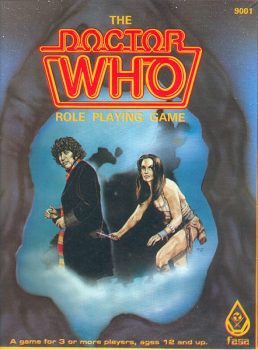
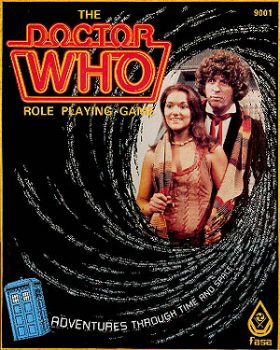
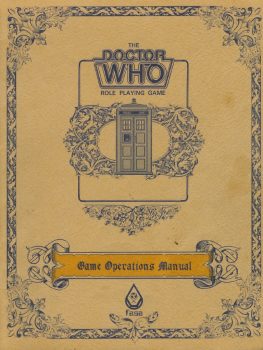
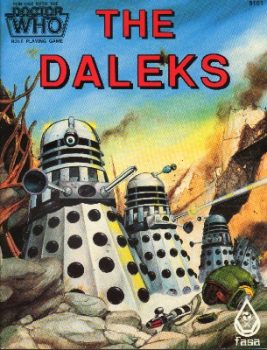
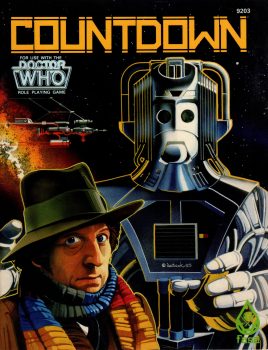

My mate had this but we never could figure out how to play it. Too complicated for us.
I only played the FASA Dr. Who role-playing game at convention events, but I recall enjoying it, particularly the “multiple Doctor” session in which I was #3 of the 3 Time Lords, which allowed me to retroactively take credit for every good action, suggestion, or quip that #1 and #2 employed.
And I just noticed that the Cubicle 7 Dr. Who game (in its 1st Edition) with loads of supplements is now up on Bundle of Holding (bundleofholding.com) until August 30, should anyone wish to try out the new(er) version. (2nd Edition Cubicle 7 Dr. Who is available on DriveThruRPG.com, in addition.)